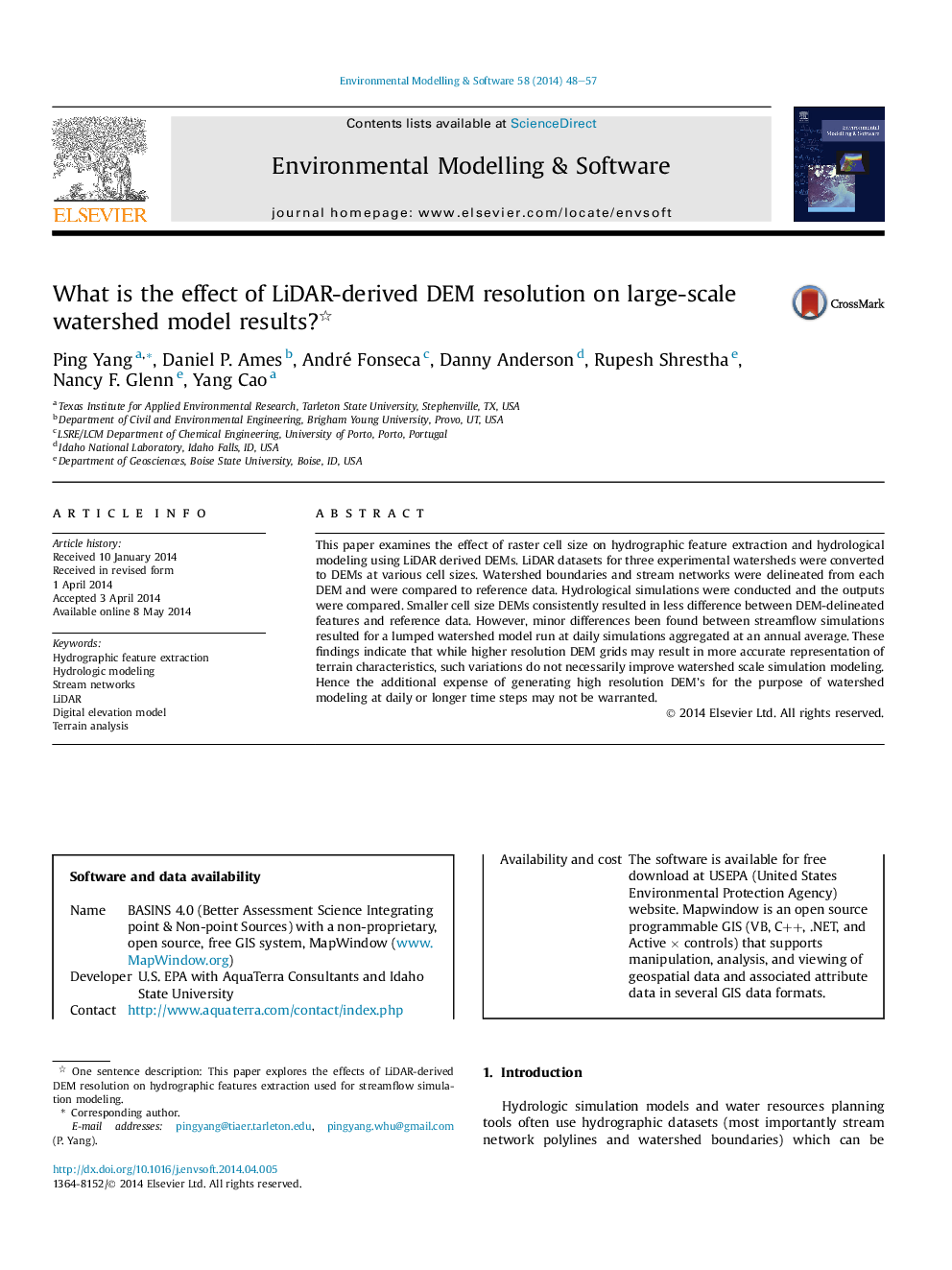| Article ID | Journal | Published Year | Pages | File Type |
|---|---|---|---|---|
| 568841 | Environmental Modelling & Software | 2014 | 10 Pages |
•DEMs Generated from LiDAR for stream network and watershed boundary delineation.•Examine the effects of LiDAR-derived DEM resolution on lumped hydrological modeling.•Smaller cell-size DEMs resulted in more detailed hydrographic features.•Additional expense for higher resolution DEM's for watershed modeling may not be warranted.
This paper examines the effect of raster cell size on hydrographic feature extraction and hydrological modeling using LiDAR derived DEMs. LiDAR datasets for three experimental watersheds were converted to DEMs at various cell sizes. Watershed boundaries and stream networks were delineated from each DEM and were compared to reference data. Hydrological simulations were conducted and the outputs were compared. Smaller cell size DEMs consistently resulted in less difference between DEM-delineated features and reference data. However, minor differences been found between streamflow simulations resulted for a lumped watershed model run at daily simulations aggregated at an annual average. These findings indicate that while higher resolution DEM grids may result in more accurate representation of terrain characteristics, such variations do not necessarily improve watershed scale simulation modeling. Hence the additional expense of generating high resolution DEM's for the purpose of watershed modeling at daily or longer time steps may not be warranted.
